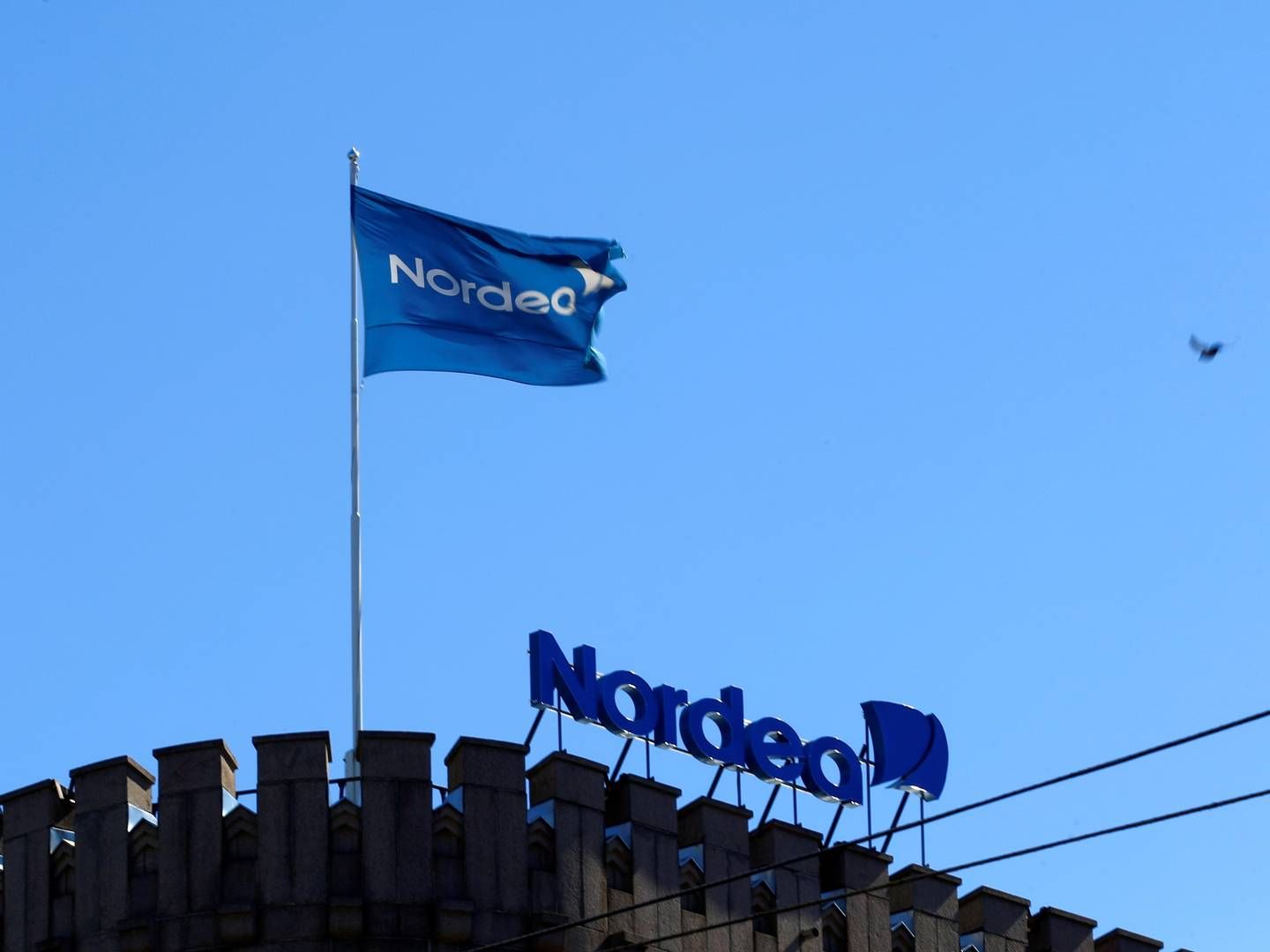Column: Lots of risks and opportunities for investors in 2024

Exactly one year ago, investors were looking back at a tough 2022 with bad returns on both bonds and equities. It was no surprise then that the mood going into 2023 was sour and expectations low as most feared a recession would be the story of this year.
Now – 12 months later – it’s evident that 2023 has turned out to be a much better year than expected:
- The recession did not arrive, so much lower earnings and much higher corporate defaults have been avoided.
- Artificial intelligence created a massive tech hype within the equity markets and boosted earnings and earnings expectations among a few big-tech companies.
- Inflation has fallen faster than expected in most countries.
- The Fed and ECB have signaled a pivot to easier monetary policy in 2024
The end result is much higher returns than most investors dared hope for, especially on equities and credit bonds, despite much tighter monetary policy and higher interest rates.
Challenges and opportunities for global investors in 2024
In the run-up to 2024, investors are again facing important tactical (short-term) and strategic (longer-term) portfolio challenges and opportunities. Some haven’t changed since a year ago, some have popped up during 2023, and several are intertwined. Here are some of the most important questions:
- Have we entered a new, more volatile inflationary investment regime, or are we returning to ”lowflation”?
- How should rising geopolitical risks be handled?
- What will be the impact of historically high government deficits and the supply of bonds?
- How should valuation extremes and concentrated returns in the equity markets be dealt with?
- Will AI live up to expectations and boost profits and productivity?
- Is the allocation to alternatives too high given higher bond yields and has the private credit boom gone too far?
- Have traditional recession indicators and other important indicators for tactical asset allocation (TAA) stopped working and if so, what to do about TAA?
- What to do with investments in China?
- Should the critique of ESG investing trigger any changes in investment approach?
- How should managers properly take care of climate risks in portfolios?
Let’s dive into some of the most important issues.
New investment regime or back to ”lowflation”?
The biggest question for investors is still whether we have entered a new investment regime of higher and more volatile inflation and bond yields due to historically tight labor markets, rising geopolitical tensions, de-globalization, underinvestment in commodity production, extremely relaxed fiscal policy and the need for central banks to become less inflation vigilante due to the high global debt levels.
Or, whether we are still in the ”lowflation” era of the pre-covid period due to stable inflation expectations, higher productivity, and downward pressure on wages due to factors including AI, globalization 2.0 (reshoring of supply lines, but no end to globalization) and China exporting deflation.
The two options have very different implications for asset allocation, asset returns, and the growth of the global and Nordic asset management industries. The former regime means lower and more volatile real inflation-adjusted returns, new market winners, and, not least, real assets versus nominal assets. It also means less leverage and a tougher employment and earnings climate for the AM industry due to lower industry growth. And vice versa in the ”lowflation” status quo scenario.
This important issue hasn’t been resolved in 2023. Several new empirical research articles support the idea that we are facing a new and more volatile investment regime. However, recent inflation and inflation expectation data has persuaded more investors and central bankers to believe we are returning to the well-known ”lowflation” regime.
For investors, the bottom line is that they should still spend a lot of time considering how to prepare their portfolios for both regimes. Undoubtedly, most portfolios, especially those designed for retail clients, are built to perform in an environment of ”lowflation.”
A big election year with focus on a Biden-Trump rematch
Politics and geopolitics will be a major issue in 2024. We already have the war in Ukraine and between Hamas and Israel. Both conflicts are of minor importance from an investor perspective as long as they don’t escalate or influence global supplies of energy or goods.
Much bigger implications for investors are the growing tensions between the US and China and the fact that 2024 will be the most significant election year ever seen globally, with elections in 76 countries covering 57% of global GDP and more than 4 billion people, according to The Economist.
The biggest focus and most considerable potential risk will be the US presidential election in November and a likely rematch between Biden and Trump. Financial markets behaved surprisingly well during the first Trump administration. However, serious political analysts fear turmoil bordering on civil war that investors will have to deal with and warn that Trump 2.0 will be a whole other ball game, as he appears to have plans to gut significant parts of the public administration, fire the central bank and stop sending funding to Ukraine.
The presidential election in Taiwan in January could also have implications for investors by influencing the delicate US-China-Taiwan balance.
The bottom line is that geopolitical risks loom large over markets in 2024, and investors must again ascertain how to protect themselves from these. However, with risks also come opportunities for positive surprises and market outcomes, and small improvements have recently been seen in the US-China relations.
How should valuation extremes and concentrated returns in the equity markets be dealt with?
Equity returns have until very recently been extremely concentrated this year, in the US not least driven by the so-called ”Magnificent 7” companies of Apple, Microsoft, Alphabet, Amazon, Nvidia, Meta and Tesla. Equity analysts have, on average, raised the expected earnings of the ”Magnificent 7” by 70% and boosted their P/E ratios from 22x to 35x, while the broader S&P500 has rerated from a P/E of 18x to 20x.
The result is that three global equity valuation extremes have emerged with relative valuations 1½-2 standard deviations away from the historical average:
- Small cap vs. large cap
- Value vs. growth
- Global ex US vs US
We haven’t seen anything like this since the tech bubble in 2000. Investors will have to decide how to deal with such a situation of very highly and very cheaply valued companies. There seem to be four options:
- Do nothing.
- Change to benchmarks with fewer concentration risks (i.e., equal-weighted, etc.).
- Change the strategic asset allocation or deal with it in the TAA.
Will AI live up to expectations and boost profits and productivity?
The previously mentioned data on earnings expectations reveals that investors expect artificial intelligence (AI) to boost corporate earnings significantly this year. Thus, news on AI will continue to have significant impact on financial markets in 2024 and whether the Magnificent7 will continue to outperform and worsen concentration risks.
The optimists find support in a new report from International Data Corporation (IDC). It forecasts that spending on GenAI solutions will increase by a five-year compound annual growth rate of 73% in the next five years to USD 143bn. Consultancy firm McKinsey expects AI to potentially boost profits in the banking sector by a whopping USD 340bn.
Many investors are skeptical and point to the fact that history is littered with similar overoptimistic forecasts for other technologies from consultancies and investment bankers. Self-driving cars and the Metaverse are some of the most apparent overhyped technologies mentioned.
Studies by IBM suggest that the deployment of AI in companies has delivered low ROIC, but the trend is improving, giving hope for more good news from this front.
The bottom line for investors is twofold: Will the proliferation of AI boost productivity and profits and keep inflation down? And who stands to benefit - only big-tech companies or other sectors, including the AM sector?
The End: Big risks and big opportunities in 2024
In 2024, investors will again face a multitude of risks due to uncertain geopolitical, technological and macroeconomic backdrops. High valuations and low-risk premia add to the uncertainty.
Risks create opportunities, though, and potential for positive surprises. Last year, many investors feared a recession in the coming year. Now, most expect a soft landing in 2024, making the threshold for positive surprises much higher.
One thing is for sure - 2024 will be an interesting year for investors and the asset management industry.
Frank Hvid Petersen has worked in the financial sector and with investments for 30 years as a trained economist, equity strategist, portfolio manager and head of asset allocation at companies like Alfred Berg, Nordea, Carnegie and Jentzen & Partners. He’s the founder of Earlybird Research & Education and writes a weekly free newsletter on macro, investments and megatrends, which can be found at frankhvid.dk.
















